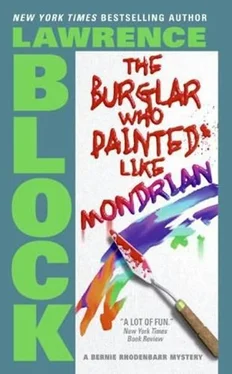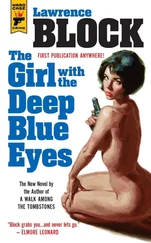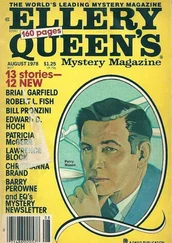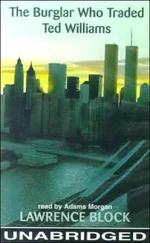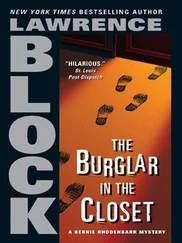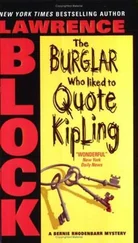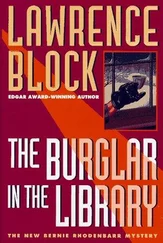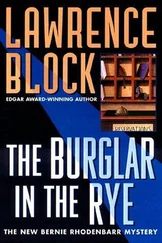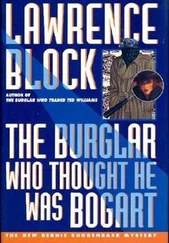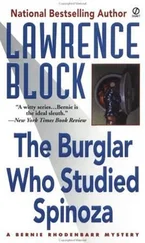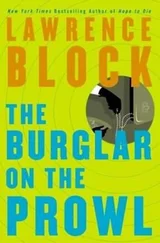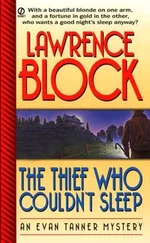“Ve vill kill ze cat,” the woman said, her voice much louder and suddenly accented. The effect was somewhere between an ad for Viennese pastry mit schlag and that guy in the World War II movies who reminds you that you’ve got relatives in Chermany.
“Now let’s be calm,” I said, to both of them. “No need to talk about violence.”
“If you do not pay ze ransom-”
“Neither of us has that kind of money. You must know that. Now why don’t you tell me what you want?”
There was a pause. “Tell your vriend to go home.”
“I beg your pardon?”
“Zere is somesing in her mailbox.”
“All right. I’ll go with her, and-”
“No.”
“No?”
“Stay vere you are. You vill get a phone call.”
“But-”
There was a click. I sat looking at the receiver for a few seconds before I hung it up. I asked Carolyn if she’d heard any of it.
“I caught a few words here and there,” she said. “It was the same person I talked to last night. At least I think it was. Same accent, anyway.”
“She switched it on in midstream. I guess she forgot it at the beginning, and then she remembered she was supposed to sound threatening. Or else she slips into it when she gets excited. I don’t like the idea of splitting up. She wants you to go to your apartment and me to stay here and I don’t like it.”
“Why?”
“Well, who knows what she’s going to try to pull?”
“I have to go downtown anyway. Somebody’s bringing me a schnauzer at eleven. Shit, I don’t have much time, do I? I can’t face a schnauzer with a head like I’ve got. Thank God it’s a miniature schnauzer. I don’t know what I’d do if I had to wash a giant schnauzer on a day like this.”
“Stop at your apartment on the way. If you’ve got time.”
“I’ll make time. I have to feed Ubi, anyway. You don’t think-”
“What?”
“That they took him too? Maybe that’s why they want me to go to my apartment.”
“They said to check your mailbox.”
“Oh, God,” she said.
When she left I went to work on Appling’s stamp collection. I suppose it was a cold-blooded thing to do, what with Archie’s life hanging in the balance, but that still left him with eight and I wanted to render the Appling stamps unidentifiable as soon as possible. I sat under a good light at my kitchen table with a pair of stamp tongs and a box of glassine envelopes and a Scott catalog, and I transferred the stamps a set at a time from their mounts to the envelopes, making the appropriate notation on each envelope. I didn’t bother figuring out the value. That would be another operation, and it could wait.
I was laboring over George V high values from Trinidad amp; Tobago when the phone rang. “What’s this crap about my mailbox?” Carolyn demanded. “There’s nothing in it but the Con Ed bill.”
“How’s Ubi?”
“Ubi’s fine. He looks lost and lonely and his heart is probably breaking, but aside from that he’s fine. Did that Nazi call back?”
“Not yet. Maybe she meant the mailbox at your shop.”
“There’s no box there. There’s just a slot in the door.”
“Well, maybe she got a wire crossed. Go wash the saluki anyway and see what happens.”
“It’s not a saluki, it’s a schnauzer, and I know what’ll happen. I’ll wind up smelling of wet dog for a change. Call me when you hear from them, okay?”
“Okay,” I said, and fifteen minutes later the phone rang again and it was the mystery woman. No accent this time, and no elaborate runaround, either. She talked and I listened, and when she was done I sat for a minute and thought and scratched my head and thought some more. Then I put Appling’s stamps away and called Carolyn.
And now we were in a small room on the second floor of the gallery. We’d followed my caller’s directions to the letter, and we were accordingly standing in front of a painting that looked remarkably familiar.
A small bronze rectangle affixed to the wall beside it bore the following information: Piet Mondrian. 1872-1944. Composition with Color, 1942. Oil on canvas, 86 x 94 cm. Gift of Mr. amp; Mrs. J. McLendon Barlow.
I wrote the dimensions in my pocket notebook. In case you haven’t caved in and learned to think metric, they worked out in real measurement to something like 35 by 39 inches, with the height greater than the width. The background color was white, tinted a little toward gray by either time or the artist. Black lines crisscrossed the canvas, dividing it into squares and rectangles, several of which were painted in primary colors. There were two red areas, two blue ones, and a long narrow section of yellow.
I stepped closer and Carolyn laid a hand on my arm. “Don’t straighten it,” she urged. “It’s fine the way it is.”
“I was just having a closer look.”
“Well, there’s a guard by the door,” she said, “and he’s having a closer look at us. There’s guards all over the place. This is crazy, Bern.”
“We’re just looking at pictures.”
“And that’s all we’re gonna do, because this is impossible. You could no more get a painting out of this place than you could get a child into it.”
“Relax,” I said. “All we’re doing is looking.”
The building where we stood, like the painting in front of us, had once been in private hands. Years ago it had served as the Manhattan residence of Jacob Hewlett, a mining and transport baron who’d ground the faces of the poor with inordinate success around the turn of the century. He’d left his Murray Hill townhouse at the corner of Madison and Thirty-eighth to the city, with the stipulation that it be maintained as an art museum under the direction and control of a foundation established by Hewlett for that purpose. While his own holdings had served as the core of the collections, paintings had been bought and sold over the years, and the foundation’s tax-exempt status had encouraged occasional gifts and bequests, such as the donation of the Mondrian oil by someone named Barlow.
“I checked the hours when we came in,” Carolyn was saying. “They’re open from nine-thirty to five-thirty during the week and on Saturdays. On Sunday they open at noon and close at five.”
“And they’re closed Monday?”
“Closed all day Monday and open until nine on Tuesdays.”
“Most museums keep hours about like that. I always know when it’s Monday because the impulse comes on me to go to a museum, and they’re all closed.”
“Uh-huh. If we’re planning to break in, we could do it either after hours or on Monday.”
“Either way’s impossible. They’ll have guards posted around the clock. And the alarm system’s a beaut. You can’t just cross a couple of wires and pat it on the head.”
“So what do we do? Snatch it off the wall and make a break for it?”
“Wouldn’t work. They’d bag us before we got to the first floor.”
“What does that leave?”
“Prayer and fasting.”
“Terrific. Who’s this guy? What’s it say, van Doesburg? He and Mondrian must have gone to two different schools together.”
We had sidled around to our left and were standing in front of a canvas by Theo van Doesburg. Like Mondrian’s work, his was all right angles and primary colors, but there was no mistaking one artist for the other. The van Doesburg canvas lacked the sense of space and balance that Mondrian had. How curious, I thought, that a man could go for months without standing in front of a single Mondrian canvas, and then he’d stand before two of them on successive days. All the more remarkable, it seemed to me, was the similarity of the Hewlett’s Mondrian to the one I’d seen hanging over Gordon Onderdonk’s fireplace. If memory served, they were about the same size and proportion, and must have been painted at about the same stage in the artist’s career. I was willing to believe that they’d look very different if one saw them side by side, but such a simultaneous viewing didn’t appear to be an option, and if someone had told me that the Onderdonk painting had been hustled downtown and stuck up on the Hewlett’s wall, I couldn’t have sworn he was wrong. Onderdonk’s painting was framed, of course, while this canvas was left unframed so as to show how the artist had continued his geometric design around the sides of the canvas. For all I knew Onderdonk’s painting had twice as many colored areas. It might be taller or shorter, wider or narrower. But-
Читать дальше
